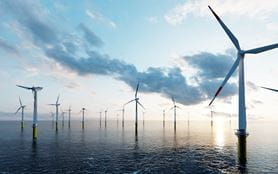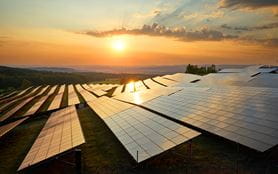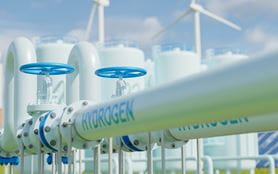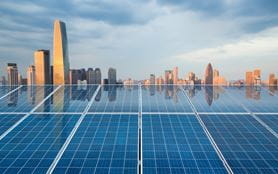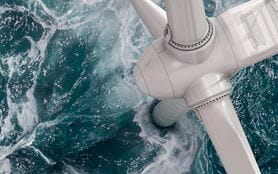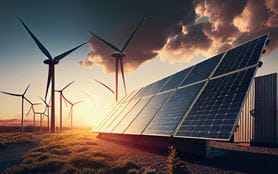Part 3: Public finance and policies must play a catalytic role
Related people




David Lee
Partner
London

Scott Neilson
Partner
Tokyo

Matthew Townsend
Partner, Global Co-Head Environment, Climate and Regulatory Law Group and the International Trade Group
London

Anna Masser
Partner
Frankfurt am Main

Ken Rivlin
Partner, Global Co-Head Environment, Climate and Regulatory Law Group and the International Trade Group
New York

Sally Dewar
CEO, A&O Consulting
London

Gauthier van Thuyne
Partner
Brussels

Kate Sumpter
Partner
London

Bob Penn
Partner
London

George Cannon
Partner
Washington, D.C.

Goran Galic
Partner
Perth
Headlines in this article
Related news and insights
Publications: 21 March 2024
Publications: 21 March 2024
Publications: 21 March 2024
Publications: 21 March 2024
Public money is vital to decarbonization but cannot bridge the financing gap alone. So how it can be used to deliver the biggest impact?
Key findings
- To meet the goals of the Paris Agreement, public actors need to increase the scale and effectiveness of their financing activities and policies.
- Public climate finance has grown faster than private climate finance over the past decade, but MDBs have committed to increase climate finance by just 32% annually through 2030, and only six of the 27 largest national and bilateral DFIs have set climate investment targets.
- Against this backdrop, public financial institutions will need to identify ways to use existing capital more effectively to mobilize private investment.
- Enacted policies indicate likely growth in government climate finance and supportive policy regimes, including USD369bn in the U.S. Inflation Reduction Act, EUR210bn in the REPower EU plan, and USD150bn in Japan’s Green Transformation Act, in addition to USD44bn in Just Energy Transition Partnerships in South Africa, Indonesia, and Vietnam.
Public finance will continue to play a critical role in the climate finance ecosystem. Through 2020, public finance (including financing from governments, DFIs, and state-owned institutions) grew at 9.1% per year compared to 2011, more than double the growth in private finance (4.3%).
However, the share of public finance as a proportion of total climate finance varies dramatically across regions (Figure 5), providing 86% of the total in Africa over the past decade but just 4% in North America.1
Given the enormous volume of investment needed to deliver Net Zero (see Part 2), it is evident that traditional public funding cannot bridge the financing gap alone. Effective deployment of public capital, policies, and frameworks will be crucial if we are to mobilize private investment at the scale required.
Concessional finance, or below market rate lending through low-cost loans, grants, or equity, is critical to investment in less mature, high-risk sectors, geographies, and technologies. In 2020, 56% of total public financing was channeled to the relatively mature transport and energy systems sectors – including for the purpose of replacing energy from coal-fired power plants – with agriculture, forestry, and other land use (AFOLU), waste and water, buildings and infrastructure, and industry together accounting for less than 20%.
Opportunity to use grants and concessional finance to reduce risk for private investors
Redirecting grants and concessional finance away from mature technologies and sectors and towards commercially less viable areas (eg early stage R&D projects in edge technologies, grants for pilot projects, and funding for emerging technologies such as green hydrogen or innovative climate smart approaches in agriculture) can help develop technologies and reduce risk for private investors.
Public financial institutions should further target regions and economies where a higher cost of capital is inhibiting private investment. For example, research indicates that debt investors may require a 5x to 10x higher rate of return to account for the risk of investing in a developing economy compared to the same project in the EU or U.S., and equity investors require a 3x to 7x higher rate of return.3
Despite this, almost 50% of international public financing was delivered through project-level market-rate debt in 2019/20 (see Table A.2 in Annex 3). In lower-income countries, this approach is likely to exacerbate their already high debt vulnerability.
Some governments and DFIs are already helping to reduce the cost of capital in developing economies by scaling risk mitigation instruments such as grants, overseas development aid, insurance, guarantees, loans, first-loss protections, foreign exchange hedges and collateral support mechanisms.
International public financial institutions are stepping up, but their approach requires a strategic, creative and transformational rethink. In 2019/20, DFIs – multilateral, bilateral and national – provided around 70% of public climate finance.
The amount of climate finance available from DFIs is expected to increase, but it will still be nowhere near what is needed to deliver Net Zero.
For example, nine MDBs are committing to investing approximately USD108bn annually in climate solutions through 2030 (Table 2). However, developed economies’ failure to fulfill their promise to deliver USD100bn of annual climate financing to poorer nations has been a source of friction at previous COPs, with the figure hitting USD82bn in 2021.4,5 If international public finance is to deliver the impact required, the focus will need to shift to increasing the effectiveness of the way this public money is deployed, as well as to the quantity of the financing itself.6
Table 2: Recent climate finance commitments by MDBs
|
MDB |
Announced commitment |
|
African Development Bank7 |
Allocate 40% of project approvals to climate finance by 2021, with equal proportions for adaptation and mitigation. Secure increased access for low-income African countries with a target of USD25bn by 2025. |
|
Asian Development Bank8 |
Deliver USD100bn in climate financing to its developing member countries from 2019 to 2030. |
|
Asian Infrastructure Investment Bank9 |
Ensure 50% of overall approved financing by 2025 is directed to climate finance (estimate cumulative approvals of USD50bn by 2030). |
|
European Bank for Reconstruction and Development10 |
Increase green financing to more than 50% of annual business volume by 2025. |
|
European Investment Bank11 |
Increase the share of climate action and environmental sustainability financing to more than 50% of annual lending by 2025 and beyond. Support EUR1tn (USD1.1tn) of investment in climate action and environmental sustainability through 2030. |
|
Inter-American Development Bank Group12 |
Increase financing of climate-change-related projects in Latin America and the Caribbean to 30% of its total financing. |
|
Islamic Development Bank13 |
Provide 35% of overall annual lending to climate finance by 2025. |
|
New Development Bank14 |
Provide 40% of direct total financing to climate projects, including energy transition. |
|
World Bank Group15 (WBG) |
Achieve an average of 35% of climate finance for the WBG from 2021 to 2025. |
National and bilateral DFIs have made fewer forward-facing commitments, although these institutions continue to increase their climate investment each year. In 2015, the International Development Finance Club (which comprises 27 DFIs with over USD4tn in assets) committed to deliver USD1tn of green finance by 2025, and met this goal in 2020.16 However, an analysis of major national and bilateral DFIs reveals that only six of the 27 largest institutions have set future-facing climate targets.17
To scale DFI financing, the decades-old paradigms of the global development finance architecture need to be reassessed. For example, according to S&P Global, MDBs, by better leveraging their balance sheets through the use of structured finance tools such as securitization, could lend a further USD1tn without reducing their AAA-rated credit profile.18
MDBs could incentivize staff to prioritize climate impacts above risk reduction
This is already a major focus of the MDBs, with one bank developing a mechanism that provides credit support coverage of its sovereign debt portfolio, giving it headroom to expand its lending (work assisted by Allen & Overy).
Additionally, MDBs could modify their investment allocation processes to incentivize staff to prioritize climate and development impacts above risk reduction, standardize processes across MDBs, reform the callable capital structure to fully utilize it, ensure consistent replenishment, and identify opportunities to raise money on the open market.19
Outside of MDBs, reforms to the wider finance architecture offer to improve liquidity in the poorest countries by leveraging and re-channeling unused special drawing rights (SDRs)20 (an asset created by the International Monetary Fund to provide liquidity to countries). The African Development Bank, for example, has published a plan whereby recycled SDRs would be used as hybrid capital to leverage its lending.21
Bridgetown Initiative could prove transformational
The Bridgetown Initiative proposes expanding existing SDR-based funds such as the Poverty Reduction and Growth Trust and the Resilience and Sustainability Trust (launched in October 2020), and setting up a new “Global Climate Mitigation Trust” holding USD500bn of unused or new SDRs.22 This could be transformational in catalyzing climate action that would deliver economic growth. Such initiatives propose investing directly in mitigation projects, taking costs off government balance sheets and reducing sovereign debt and the risk of default.
Aligning fiscal policies and government spending to national decarbonization priorities is critical. As mentioned in Part 1, some modeling indicates that global temperatures could exceed the 1.5°C threshold as early as 2027. A 2022 analysis by the UN Principles on Responsible Development of more than 80 current climate policy and technology developments predicts that – despite the fact that government investment in climate solutions is set to grow – global temperatures are still likely to rise by 1.8°C on average by 2050.23
The study includes 20 announcements from Q4 2022 that marginally accelerate a pathway to scenarios compatible with 1.5°C, others that increase the probability of a temperature rise of 1.8°C, and two that indicate potential deceleration to a pathway above 1.8°C.24
Several countries in Global South propose more ambitious NDCs
The positive developments include more ambitious Nationally Determined Contributions (from Mexico, Vietnam and Turkey), increased policy ambition in relation to tackling methane emissions from oil and gas operations (from Australia, Canada, the EU, and U.S.), recommitments to forestry protection (Brazil), increased policies and commitment to nature-based solutions (EU), 2050 non-binding Net Zero target for aviation (by the UN International Civil Aviation Organization) and Just Energy Transition Partnerships (discussed in more detail below).
As pointed out above, several countries are also likely to increase their climate spending. For example, the 2022 Inflation Reduction Act (IRA) in the U.S. includes an annual USD37bn for climate solutions over the next ten years (although analysts from Credit Suisse and Goldman Sachs believe this amount could be twice or three times as large after taking into account increased demand for tax credits and hundreds of billions of dollars of increased lending capacity, among other things).25
In the EU, the Russia-Ukraine war has led to the development of the REPower EU plan, which is estimated to cost EUR210bn from 2022 to 2027. The plan calls for increased energy efficiency, accelerated rollout of renewable energy and heat pumps, and reduced fossil fuel usage in industry and transportation.26 The EU is also considering investment to respond to the industrial policy investments from China and the U.S., while Japan has also announced a USD150bn funding package for energy transition projects which aims to catalyze USD1tn of investment over the next 10 years.27
The impact of these policies on the Net Zero transition globally remains to be seen. Will there be level growth in clean energy investment across the world, or will the pull of the IRA prove stronger than the incentives offered by Japan, for example?
But the fact that many national governments are recommitting to climate action in the face of competing budget priorities and political constraints in reallocating existing public financing has led some to view these policies as once-in-a-decade opportunities. The rapid response from developed economies to the energy crisis in 2022 to 2023 – and to COVID-19 before that – shows that funding can be made available when needed, with European governments’ allocation of USD775bn (between September 2021 and January 2023) to respond to rising energy costs being a case in point.28 As the economist and academic Lord Stern stated in 2022, delivering Net Zero will require the “biggest economic transformation in peacetime.”29
Collaboration between public and private institutions will be critical to deliver Net Zero
Catalyzing collaboration between public and private finance will be instrumental to achieving targeted climate and broader global developmental goals. There is intense international debate over whether linking climate investment to the broader UN Sustainable Development Goals could provide a solution to the multiple, interlinked crises we face, given that all can be achieved in part or substantially through climate investment and a just transition.
A good example are the Just Energy Transition Partnerships. These are frameworks that have so far been adopted in South Africa,30 Indonesia,31 and Vietnam32 that will channel around USD44bn from consortia of wealthy countries and private companies to decarbonization over the next three to five years.
They work by funding the decommissioning of coal-fired power plants that still have many years of operational life left, in exchange for expanded or improved electrical grid infrastructure and jobs for affected communities, to ensure they are not left behind. Addressing and preventing these impacts would require large volumes of public and private finance, and on their own these investments would be too risky or unprofitable for private investors to pursue.
Footnotes
- The passage of the Inflation Reduction Act will likely increase this percentage in North America, although the extent of the increase is unclear, A large portion of the IRA’s funding is through tax credits and, as discussed in Annex 1, to avoid double counting we do not track tax credits as public finance in this analysis.
- See Annex 2 for a full list of regions and countries.
- https://www.climatepolicyinitiative.org/publication/cost-of-capital-for-renewable-energy-investments-in-developing-economies/
- https://www.iadb.org/en/news/mdbs-climate-finance-low-and-middle-income-countries-reaches-51-billion-2021
- For commitments that are based on a percentage of overall spending going to climate solutions, we assume that overall spending remains the same. For MDBs that have already met their climate finance targets, we assume their level of climate finance remains the same moving forward.
- This increase in international climate finance is occurring as other forms of Official Development Assistance (ODA) are being decreased in some countries. See for example https://www.devex.com/news/brutal-suspension-to-uk-aid-to-last-at-least-until-september-103693. While the overall amount of ODA is increasing year-on-year, it has plateaued at less than 0.35% of gross national income. See: https://www.oecd.org/dac/financing-sustainable-development/development-finance-standards/official-development-assistance.htm.
- https://www.afdb.org/en/documents/climate-and-green-growth-strategic-framework-projecting-africas-voice-strategy-2021-2030
- https://www.adb.org/news/adb-raises-2019-2030-climate-finance-ambition-100-billion
- https://www.aiib.org/en/about-aiib/who-we-are/infrastructure-for-tomorrow/green-infrastructure/climate/index.html
- https://2021.sr-ebrd.com/investments-and-impact/
- https://www.eib.org/attachments/lucalli/20220287_climate_action_and_enviromental_sustainability_overview_2023_en.pdf
- https://www.iadb.org/document.cfm?id=EZSHARE-1729984378-30
- https://www.isdb.org/climate-change/publications/climate-action-plan-2020-2025
- https://www.ndb.int/about-ndb/general-strategy/
- https://openknowledge.worldbank.org/bitstream/handle/10986/35799/CCAP-2021-25.pdf?sequence=2&isAllowed=y
- https://www.idfc.org/wp-content/uploads/2022/05/idfc-gfm-2021-4pager-211015-final.pdf
- https://www.canada.ca/en/services/environment/weather/climatechange/canada-international-action/climate-finance/delivery-plan/progress-report-2022.html; defined as the 20 largest DFIs by assets and all DFIs that provided at least USD500m in climate finance in 2020.
- https://www.lse.ac.uk/granthaminstitute/wp-content/uploads/2022/11/IHLEG-Finance-for-Climate-Action-1.pdf; https://www.bu.edu/gdp/files/2018/04/Munir_Gallagher_2018-1.pdf
- https://www.climatepolicyinitiative.org/wp-content/uploads/2023/06/CPI_An-Innovative-IFI-Operating-Model-for-the-21st-Century_updated.pdf; https://www.dt.mef.gov.it/export/sites/sitodt/modules/documenti_it/rapporti_finanziari_internazionali/rapporti_finanziari_internazionali/CAF-Review-Report.pdf
- https://www.imf.org/en/Topics/special-drawing-right
- https://www.cgdev.org/blog/valentines-day-gift-afdbs-campaign-sdr-recycling-now-we-need-more-heart
- https://www.weforum.org/agenda/2023/01/barbados-bridgetown-initiative-climate-change/
- https://www.unpri.org/download?ac=17812
- The two developments that indicate potential deceleration are a lack of progress at COP 27 on ending deforestation and China pushing back its building materials sector carbon peak from 2025 to 2030.
- https://www.credit-suisse.com/about-us-news/en/articles/news-and-expertise/us-inflation-reduction-act-a-catalyst-for-climate-action-202211.html; https://www.goldmansachs.com/insights/pages/the-us-is-poised-for-an-energy-revolution.html. Note that not all of this will necessarily result in increased climate finance flows for governments – for example, if the government gives a grant to an EV manufacturer, the only finance flows that would be tracked would be the purchase of those vehicles, not construction of a manufacturing facility.
- https://ec.europa.eu/commission/presscorner/detail/en/ip_22_3131
- https://asia.nikkei.com/Spotlight/Environment/Climate-Change/Japan-plans-155bn-decarbonization-fund-for-grid-factory-investments
- https://www.bruegel.org/dataset/national-policies-shield-consumers-rising-energy-prices
- https://www.lse.ac.uk/granthaminstitute/news/net-zero-will-require-the-biggest-economic-transformation-ever-seen-in-peacetime-says-nicholas-stern/
- https://www.thepresidency.gov.za/content/south-africa%27s-just-energy-transition-investment-plan-jet-ip-2023-2027
- https://www.whitehouse.gov/wp-content/uploads/2022/11/Joint-Statement-1.pdf
- https://www.vietnam-briefing.com/news/vietnams-jetp-agreement-unpacked.html/


